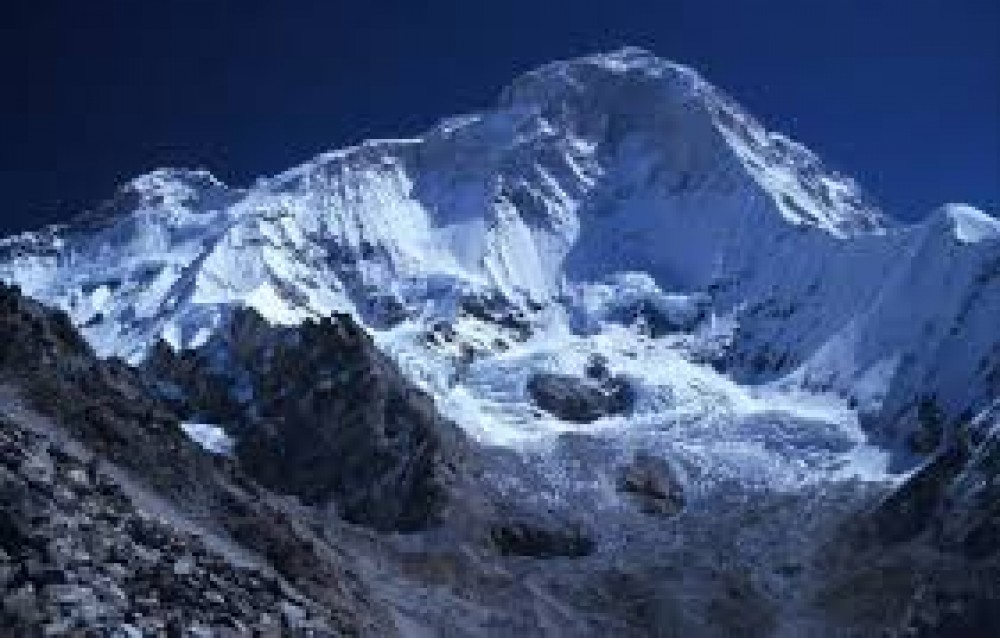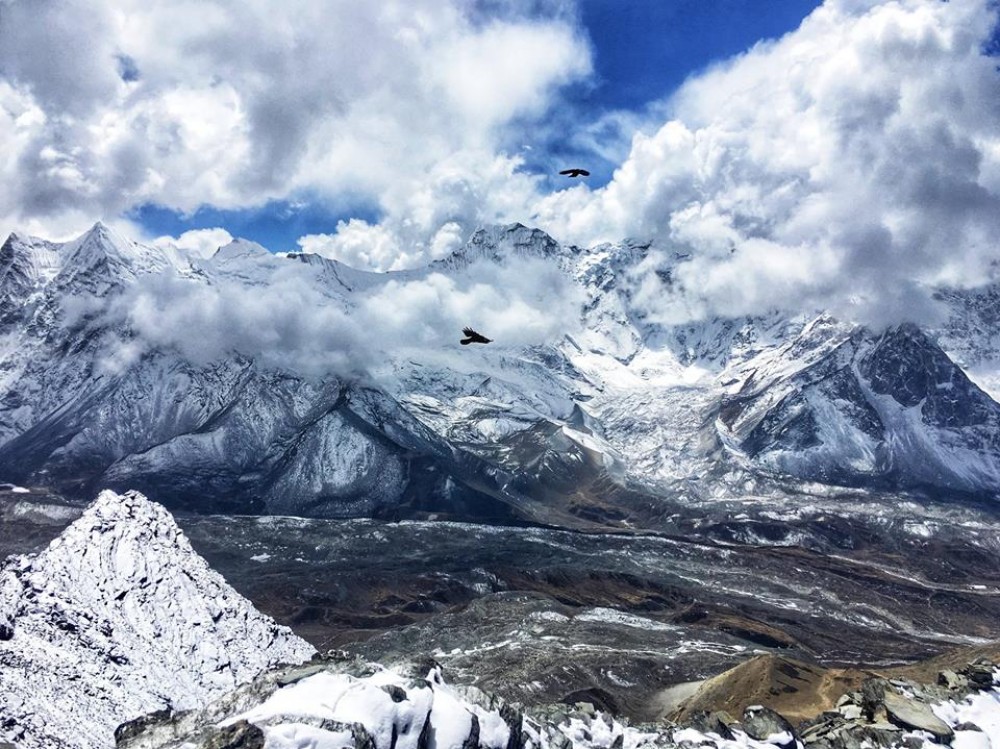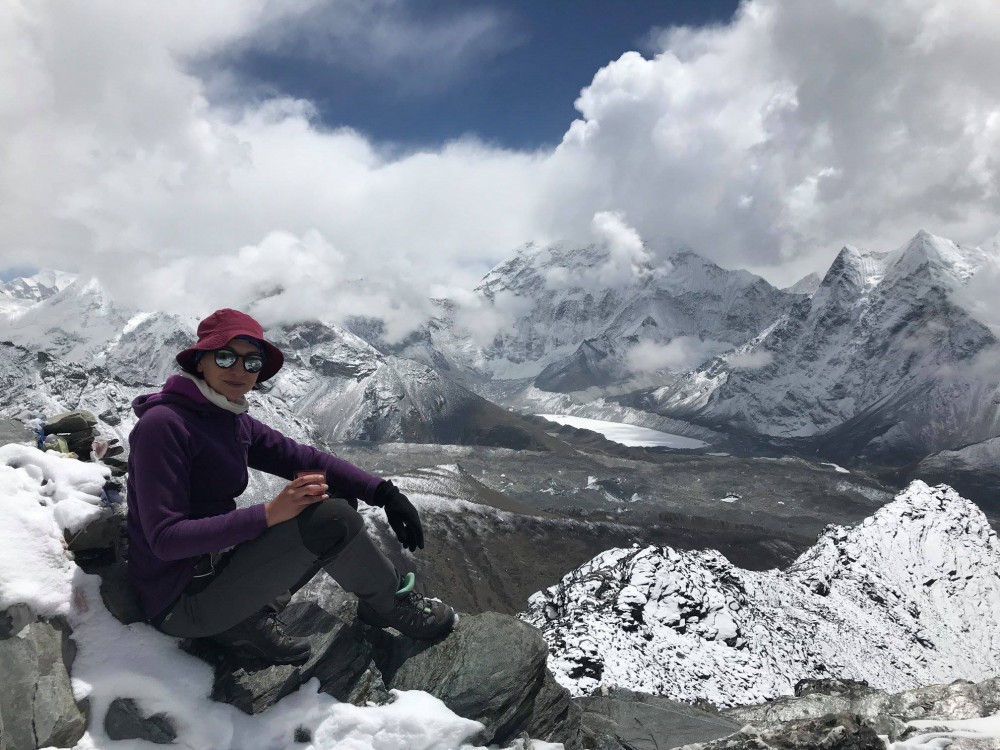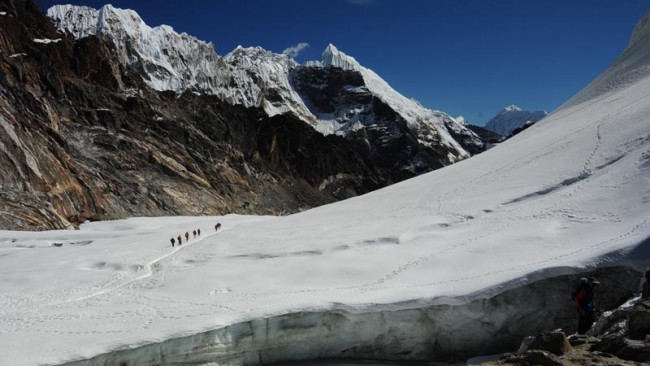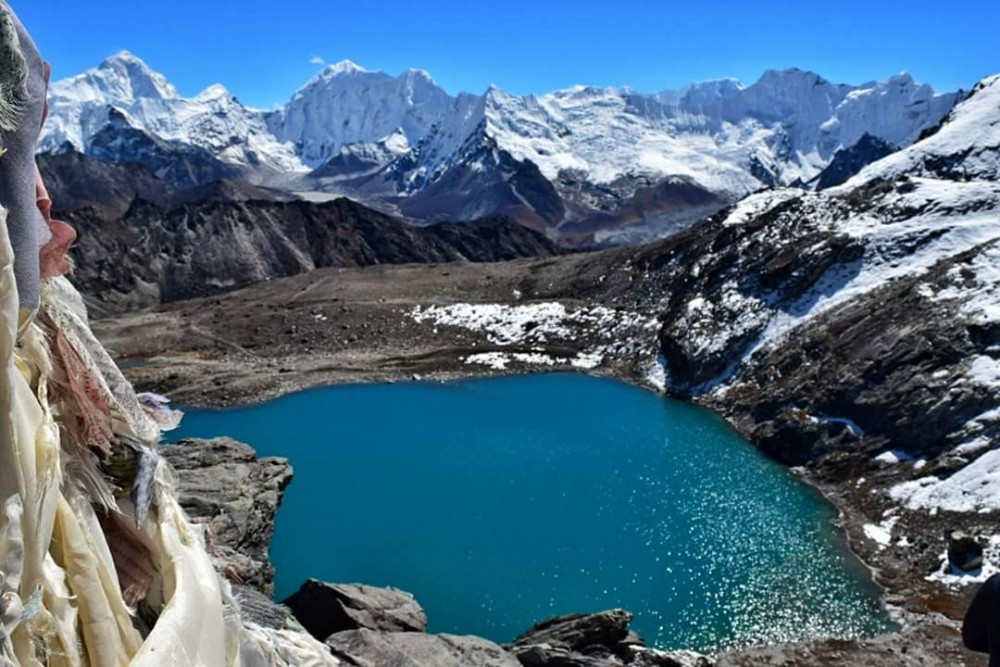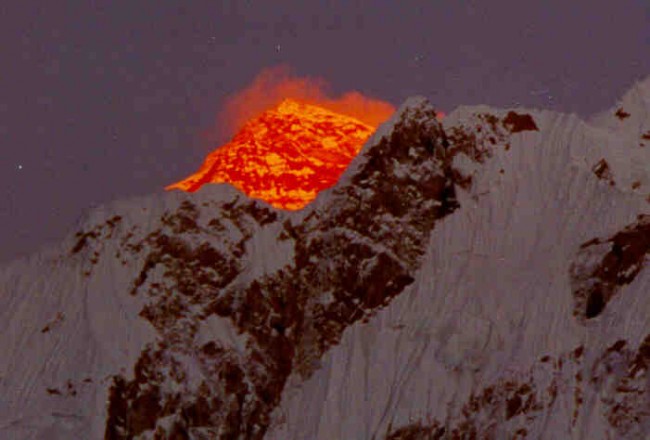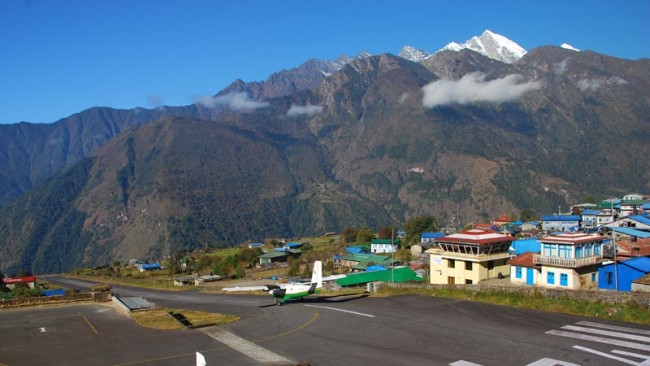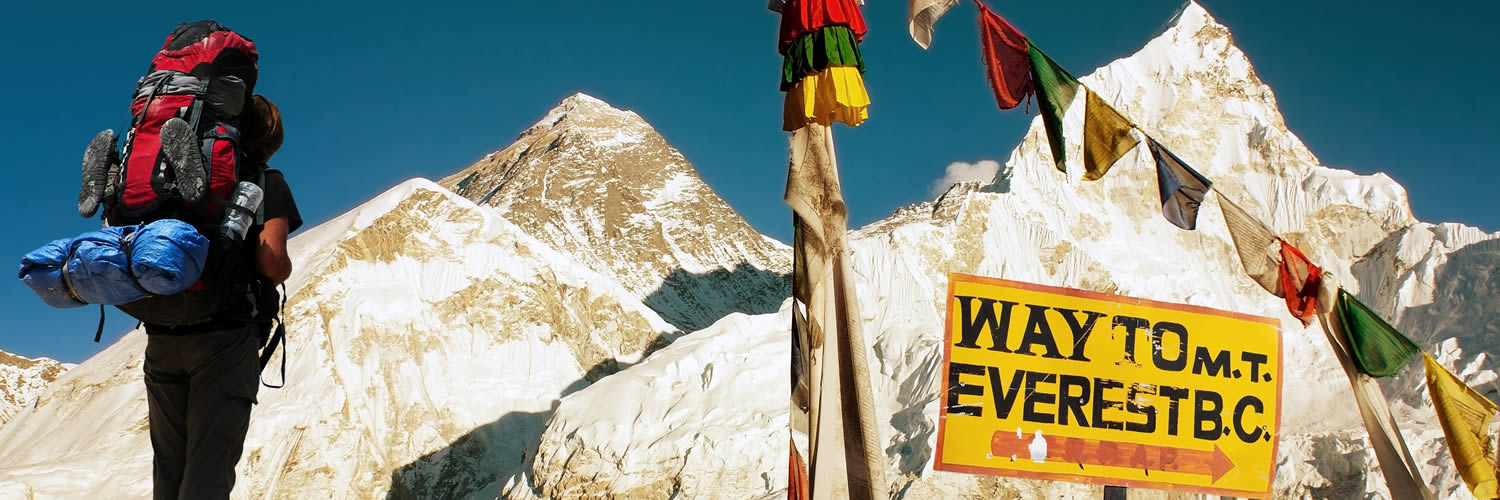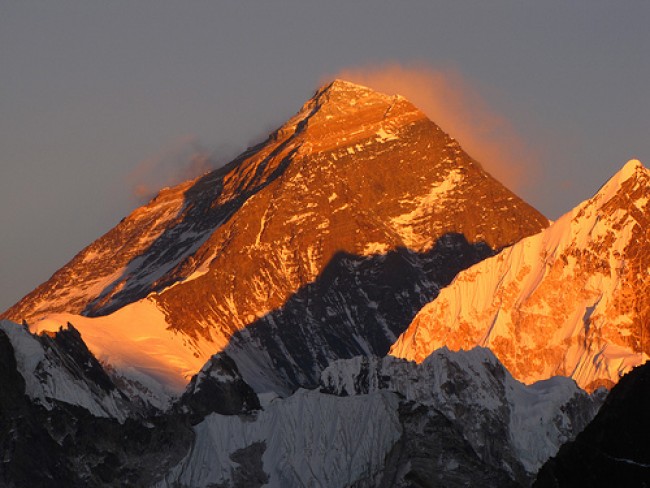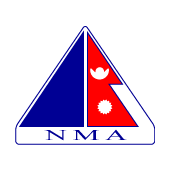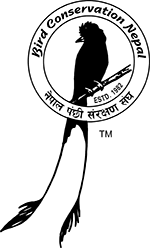Nepal Visa Information
Visa in Nepal can be acquired on arrival at Tribhuwan International Airport, Kathmandu and also at the border entry points in Kakadvitta, Birgunj, Bhairahawa, Nepalgunj, Gaddachowki border of Nepal - India and Kodari on Nepal-China border. Visa can also acquire at the nearest Nepal Embassy. For visa renewal purpose you can contact at Department of Immigration, Kalikasthan at Kathmandu. A valid passport and one passport -size photo with a light background is required. Visa can be obtained only through payment of cash in the following currency: Euro, Swiss Franc, Pound Sterling, US Dollar, Australian Dollar, Canadian Dollar, Hong Kong Dollar, Singapore Dollar and Japanese Yen. Credit card, Indian currency and Nepali currency are not accepted as payment of visa fee.
Visa Facility Duration Fee
Multiple entry 15 days US$ 30 or equivalent convertible currency
Multiple entry 30 days US$ 50 or equivalent convertible currency
Multiple entry 90 days US$ 125 or equivalent convertible currency
Gratis (Free) Visa
For first visit in one visa year (January to December), gratis visa for 30 days is available only for nationals of South Asian countries like Bangladesh, Bhutan, Maldives, Pakistan and Sri Lanka. However, the visa can be extended from the department of immigration with respective fares.
Indian nationals do not require visa to enter into Nepal.
Nepal Visa for Chinese Nationals
As per official circular of the Embassy of Nepal in Beijing, China, Chinese nationals applying for tourist visa to Nepal are being provided “gratis tourist visa” from Jan. 5, 2016, from following Nepali missions in the People’s Republic of China:
• Embassy of Nepal, Beijing
• Consulate General of Nepal, Lhasa
• Consulate General of Nepal, Hong Kong
• Honorary Consulate of Nepal, Shanghai
More Information
Nationals from Nigeria, Ghana, Zimbabwe, Swaziland, Cameroon, Somalia, Liberia, Ethiopia, Iraq, Palestine and Afghanistan will need to obtain visa from Nepal Embassies or Diplomatic Missions in their respective countries, as they do not get visa on arrival at the immigration entry points of Nepal.
Transportation, Flight and Arrival Information
We will send our representatives from Actual Adventure Pvt.Ltd at Tribhuvan International Airport a bit earlier than your arrival. As you land at Tribhuvan International Airport and complete your immigration process you will see our representatives holding a placard of your and company’s name. They will welcome you in a Nepali style offering some flowers and then transfer you to the hotel in our own private luxurious vehicle. You will meet rest of the team members in the hotel. The next day you will have your breakfast at the hotel or drive to the airport for your flight to Lukla depending upon the flight schedule. The costs includes Airport to Hotel pickup and drop for both domestic and international flights. You will meet the rest of the team members in Lukla and only guide will be going along with you from Kathmandu.
Accommodations Meal and Drinking Water
The accommodations during Kathmandu will be provided in standard 3 star hotels. However accommodations during the trek will be provided in Tea houses or lodges. All the accommodations will be provided on twin sharing basis. In Kathmandu you will get luxurious rooms with attached bathrooms and other luxury facilities. But, it might not be possible during the trek. You will be provided with clean and comfortable accommodations but in the mountain region there might not be facilities of attached bathrooms in the lodge or guest houses and also you may have to pay extra charges for hot water as well. We will try our best to provide you the best available services as far as possible. Single supplement rooms can also be provided on request but may not be available on higher altitude.
Meals
All meals during the trek will be provided by the company. The meals are provided three times a day that includes Breakfast, Lunch and Dinner. The breakfast is provided at the same lodge/teahouse where you had your overnight stay; Lunch is provided on the way and dinner at the last stop of the day where you will have your overnight stay. Since, all the tea houses/ lodges are run by the local people they have the similar food items on the menu. The tea houses mostly serve the local Nepali dishes and also offer some common Indian and continental food items as well. You can choose your food as according to the menu. We advise you to give a try to local food items and treat your taste buds with new flavors. Since, most of the food items are made up of locally grown it is healthy and organic as well. The breakfast during Everest Base Camp Trek usually consists of toast, eggs, potatoes, and tea or coffee. Some tea houses offers instantly made chapattis or Porridge instead of toast. The lunch and dinner usually consists of typical Nepali food called Dal Bhat (cooked Lentils and Rice) including vegetables and pickles or you can also choose noodles, pastas, soups and other items. Since every food items are made by the local people you may not get that exact taste in the dishes other than local dishes.
Drinking water
Water is an essential part of your trek. You need to drink plenty of water during your. Most of the diseases during your trek are caused by drinking impure water. However it is not that the water in the mountain region is impure. It is natural and clean the people there consume it direct from the tap. But, since you are not used to you may get directly affected and consuming water direct from the tap might ruin your trek. Here are the tips for consuming water during Everest Base Camp Trek.
1. Mineral Water/ Bottled water.
Mineral water or Bottled water is available at most of the tea houses. The bottled water costs normally 1 Dollar per liter. If you find it in any tea houses it is better to carry an extra bottle because it may not be available anywhere during the trek.
2. Boiled Water
Drinking boiled water is probably the best method while trekking in the mountains. It is highly effective treatment for killing the bacteria from the water. You can boil the water in the tea house and carry it along with you during the trek. The tea hoses charges normally one to two dollars to boil the water.
3. Purified Water.
You can bring your own water purification tablets like Aquatabs®, Chlorine tablets, Bhromine Tablets along with you. It helps to save your budget as well.
4. Filtered Water.
You can also use filtered water as well during your Everest Base Camp Trek. This can be an alternate where boiling is not preferred and also there is not any availability of other purified water. The filters like hand pump are effective in removing protozoa, bacteria and chemicals/toxins from the water but may not be effective removing the viruses.
Leader & Staffs Arrangements with Porter Care
During this Classic Everest Base Camp trek you will fly to Lukla from Kathmandu only with your guide. Other team members like assistant guide and porters will join you from Lukla. We focus on giving employment opportunities to the local people as far as possible. We choose experienced field staff having good knowledge in their related field. We do have highly experienced team of porters and guides. Our field staff leaders are highly experienced and have undergone the trainings like. Intensive Wilderness First Aid, Trekking Guide Training, Eco Trekking Workshop and Adventure Meet, English Language, Conservation and Biodiversity, Rock climbing, Ice Climbing and Mountaineering (for expedition leaders).
Why do we use Porters?
Porters are the most helpful assistant for your Everest Base Camp Trek. They carry your luggage all the way through your trek. We use the local porters during Everest Base Camp Trek. It is a small effort from our side to provide them employment opportunity and help them maintain their living standard and look after their families. We provide one porter for each two members of a group and also provide personal porter on request with additional costs.
Why don’t we use Yak as Porters?
During your Everest Base Camp Trek you can also see several Yaks and Mules on your way used as porter. Actual Adventure Pvt.Ltd doesn’t use yaks and mules as porters during the trek because we respect animal rights and emphasis on giving employment opportunities to the local people.
Guide and Porter info
It is in the hand of guide and porter to actually make or break your trip. A good guide can give you a memorable trek of your life time whereas a bad can ruin your trek and make it the worst. Actual Adventure Pvt. Ltd has a team of highly experienced a passionate trekking guides, expedition leader, porters and tour guides. With their years of experience and dedication in their fields they have been providing our customers with remarkable service and excellent results. You can have the detailed information of our guides in the company’s Trip Management Team (Field Staff).
Equipment’s & Packing List
Proper equipment and packing is very necessary during the trek. No proper trekking gears can ruin your trekking experience. You will need following trekking gears and equipment’s for Classic Everest Base Camp Trek.
Summary
• Heavyweight gloves or mittens with a waterproof shell outer
• Down vest and/or jacket (optional)
• Fleece or wool trousers/pants
• Trekking/Hiking boots with spare laces
• Thick, warm wool hiking socks
• Footwear for around camp, example, running shoes and/or sandals
• Gaiters (optional)
• Thermal tops
• Fleece jacket or pullover
• Wind cheater jacket (optional)
• Waterproof shell jacket
• Thermal gloves
• Underwear
• Shorts
• Cotton trousers/pants
• Thermal bottoms
• Sun hat or scarf or Hat or light balaclava
• T-shirts
• Socks
• Sunglasses with UV protection (opt to but this at your home country)
• Sleeping bag rated to 0 degrees (3/4 season)
• Head lamp, spare bulbs & batteries
• Small padlock to lock trek bag
• Plastic bags
• Daypack (35-40 litres/2500-3000 cubic inches)
• Camping mattress
• Water bottles
• Small wash towel
• Footwear (see footwear section below for details)
• Waterproof shell trousers/pants (preferably breathable fabric)
• Toiletries
• Basic first aid kit
ON THE TRAIL DAYPACK
● Extra layers, gloves, wind breaker and poncho
● Sunscreen
● Lip Balm with Sunscreen
● Broad brimmed hat or bandana (for sun protection)
● Iodine Water Tablets (personal preference)
● Water Bottles or Camel Back
● Sunglasses
● Headlamp with extra batteries
● Favorite Snacks
● Waterproof bags to protect electronics or paperwork
● Camera with extra batteries and memory cards
● Umbrella (works great in a light rain or to protect from the sun)
● Duct tape or moleskin for blisters
● Toilet Paper
● Trekking Poles (optional)
● Thermos (optional for hot beverages)
CLOTHING: BASE, MIDDLE AND OUTER LAYERS
● Moisture wicking long sleeve tee-shirts (2)
● Moisture wicking tee-shirts (1)
● Long underwear pants (2)
● Underwear (5 to 7)
● Heavy Fleece or Down Jacket
● Long sleeve shirts (2)
● Sweatshirt (optional)
● Fleece Pants
● Trekking Pants (2)
● Shorts (optional)
● Gortex or Waterproof Jacket with hood
● Rain Poncho that covers your day pack
● Waterproof Pants
● Wide brimmed hat
● Wool hat (Should cover ears)or Balaclava
● Lightwight Gloves
● Insulated Wool or Down Mittens
● Gaiters (optional)
FOOTWEAR: SHOES AND SOCKS
● Hiking boots with ankle support
● Camp shoes or Tennis Shoes
● Plastic bag to carry spare shoes
● Hiking socks (10)
● Sock Liners (optional)
SLEEPING BAG
● Sleeping bag rated to -15° C/ 0° f
● Sleeping bag liner (optional)
● Sleeping bag stuff sack
DUFFEL BAGS AND DAY PACKS
● Duffel Bag for Carrying Your Gear (we provide this for the trek)
● Day Pack for Carrying what you need on the trail
● Small Lock(s) for duffel bag and day pack
● Waterproof cover for daypack
● Drybags in several sizes
● Stuff sacks for dirty clothes/shoes
FIRST AID KIT AND TOILETRIES
Our team brings along a basic first aid kit but we recommend you also carry the following;
● Advil or Ibuprofen
● Diamox (for altitude sickness)
● Personal Prescriptions
● Medical Tape (for preventing treating blisters)
● Antibiotics (Cipro for travelers’ diarrhea)
● Diaper Rash Cream (Can treat rashes or chaffing)
● Basic toiletries (Soap, Deodorant…)
● Wet wipes
● Panty Liners and Tampons
● Face lotion
● Hair brush
● Hair ties
● Hand warmers
● Ear plugs for sleeping
PAPERWORK AND MONEY ON THE TRAIL
● Minimum 06 months Valid Passport (needed at entry gate for registration)
● Spending Money for personal use
● 3 Passport Size Photo (Needed for trekking permit)
OTHER ITEMS
● Portable Solar Charger
● Journal, pen and paper
Equipment Buy in Kathmandu
If you have not brought any of these equipments then you can also buy this in Kathmandu as well. If you need help our guides will help you to buy the trekking gears in Kathmandu. You can find the wide range of varieties while buying the trekking gears in Kathmandu. The qualities of the trekking gears are similar to that you get in your countries. You can also find medium quality gears at cheaper rates as well. You can find all types of trekking gears in Thamel which is the main street for backpackers and trekkers in Nepal.
Equipment Hire in Kathmandu.
You can also hire the equipments and trekking gears in Kathmandu as well. But we recommend you to bring your own equipments as far as possible. You will have a better experience in your own equipments’ rather that hiring the used equipments’. However, hiring trekking gears can be a great idea for backpackers and budgeted trekkers since hiring trekking gears can be a lot cheaper than buying. Have a look to the cost of hiking and trekking gears in Kathmandu.
Training and Fitness for Trekking.
No prior training and experience is required to do Everest Base Camp Trek. But, if you have trekking experience anywhere in the world then it can be an added point to your trek to Everest Base Camp. If you can walk up to 6-7 hours a day in an unfamiliar terrain then you can easily trek to Everest Base Camp. It is better if you start taking energy boosting diets and doing some physical exercise a month before the trek. All you need to have is strong willingness and ability to overcome the challenges.
Staying Healthy
Staying healthy and fit is very important when you are trekking to one of the most strenuous trekking destinations. You need to be very careful about your health and health related problems. Here are the following tips you can use to stay healthy during Everest Base Camp Trek.
• Eat proper and healthy diets.
• Avoid eating meat and meat products more often.
• Drink a lot of water.
• Don’t drink water direct from the resources or without purifying.
• Starting exercising a month prior to the trek.
• Take your regular medicines with you.
Take Care of your Feet.
Taking care of your feet is a must when you are going on a trek. Not taking proper care of your feet can ruin your trek. To take care proper care of your feet the following tips might be helpful.
• Buy good quality comfortable shoes.
• Clip Your Toenails
• Apply Powders/Creams/Tapes
• Wear the Right Socks
• Wash your feet regularly.
• Soak your feet for at least 10- 20 minutes at the end of the day.
Getting a Good Night Rest
As it is said ‘Early to bed, early to rise makes a man healthy and wise’, getting a proper goodnight sleep is very important for everyone. During the trek since your body gets tired after walking all day long a proper sleep is a must. You need to sleep for at least 7-8 hours. A good night sleep helps your body to take rest and recollect the energies that you’ve lost during your trek. For a better sleep we recommend you to carry a sleeping bag with you. The sleeping bag will be provided by the company or you can carry your own if you have. Sleeping Bag is necessary especially when you are trekking to Everest Base Camp because since only basic accommodations are available the blankets might not be enough for you.
Acclimatization & Sickness.
Acclimatization is very important when you are trekking to an altitude of more than 3500m. Proper acclimatization helps to reduce the chances of Altitude Sickness. The itinerary is designed with proper acclimatization that will help your body to adopt the lower oxygen content in the air. Once you reached an altitude of 5000m the oxygen content in the air is less than 50% than that of the sea level. One of the main causes of altitude sickness is staying too long at high altitude without proper acclimatization. If in case you suffer from altitude sickness, the guides will notice the symptoms and then drop you to the lower altitude immediately. You have to inform to your guide if you notice any discomfort or symptoms of AMS. Major altitude sickness might need emergency helicopter rescue so make sure your travel insurance covers all the risk including helicopter rescue.
Note: If you suffer from altitude sickness in the mountain and still want to continue the trek then you can directly call to the office or ask you guide to call to office and make arrangements. In such case you may have to stay at the mountains for some extra days so we suggest you to have at least three extra days than your trek schedule. We charge $70 for extra days in the mountains. Since, there are several groups trekking from the company it is possible for you to join another group during peak seasons. However, it might not be possible during off season and you may have to pay extra charge for the porters and guide.
To know about the symptoms of Altitude sickness the following content might be helpful.
Know about Altitude
Hiking or trekking to high altitudes can result altitude sickness and sometimes can be severe as well. So, it is better to have proper acclimatization and stay hydrated and have proper balance diets while trekking to higher altitudes.
Symptoms of High Altitude sickness
The symptoms of altitude sickness depend upon various factors. These are the primary symptoms of Altitude sickness that can be cured immediately with certain precautions.
• lack of appetite, nausea, or vomiting
• exhaustion or weakness
• dizziness and insomnia
• pins and needles
• shortness of breath upon exertion
• feeling sleepy
• general malaise
• swelling of the hands, feet, and face
If the primary symptoms are left untreated it may result to a serious altitude sickness which may need emergency rescue. The following are the major symptoms of AMS.
• fever
• A constant headache that doesn’t respond to any painkillers.
• increased vomiting
• constant dry cough often with pinkish sputum
• numbness and dizziness
• gradual loss of consciousness
Travel Insurance and Evacuation in emergency
Travel insurance is compulsory for all our clients traveling with our company. The Nepalese Insurance company doesn’t have travel insurance for foreign people so we recommend you to bring the legal documents with you while coming to Nepal. Your travel insurance must cover the loss due to theft, injury, delay; inconveniences or any other and the company should not have any liabilities for your personal loss. Make sure your travel insurance also compensate emergencies helicopter evacuation in case of emergencies.
Physical Condition & Experience Requirements
No prior training and experience is required to do Everest Base Camp Trek. But, if you have trekking experience anywhere in the world then it can be an added point to your trek to Everest Base Camp. If you can walk up to 6-7 hours a day in an unfamiliar terrain then you can easily trek to Everest Base Camp. It is better if you start taking energy boosting diets and doing some physical exercise a month before the trek. All you need to have is strong willingness and ability to overcome the challenges.
Do and Do Not
Here are some of the things that you have to keep in mind while trekking to Everest Base Camp.
Do’s
• Walk slowly
• Drink purified or boiled water.
• Eat healthy foods.
• Get proper Acclimatization.
• Respect local culture and people.
• Bring your regular medicines and first aid kit.
Don’ts
• Don’t Get to enthusiastic
• Don’t drink water direct from resources.
• Eat Junk Foods
• Neglect the signs of altitude sickness.
• Disrespect the local culture and traditions.
Solo Travelers.
The numbers of Solo travelers are increasing rapidly in recent few years in Nepal. Nepal, being a beautiful and peace loving country is also one of the safest countries for solo travelers. However, the cost for solo traveler might be expensive since single supplement is very difficult to find and are expensive as well in the mountain regions.
Is Solo Travelers Safe in Nepal?
Nepal is one of the safest countries to travel in the world. We see numbers of solo travelers around the streets of the city and trekking areas. Tourism related crimes in Nepal are very less and we Nepalese treat our guests as gods. Even though, it is safe but still you need to be careful while walking to the cities alone during the mid night and we recommend you to hire a guide while trekking.
Is Female Solo Travelers safe in Nepal?
Nepal is generally considered safe for women travelers. Nepal might have a conservative society but the people are open to every kind of cultures which helps to stay true. There haven't been many serious crimes against tourists since few years. Yet, travelers are requested to have considerable care while travelling.
Can you trek in Nepal without a guide?
Nepal requires the use of guides and porters such as in some of the regions such as Inner Dolpo, Kanchenjunga and Upper Mustang due to the areas being restricted. However, places such as the Annapurna Conservation Area and Everest Base Camp do not require guides. But we highly recommend to at least having a guide with you. Since, hiring a guide is very cheap in Nepal and it is not safe to travel alone in the mountain region you need to hire a guide for your personal safety.
Required Permits for Trekking
The permit required for Everest Base Camp Trek like Sagarmatha National Park Permit, and TIMS card will be managed by the company itself. For this you will need to submit your passport sized photo (2 copies) and a photocopy of your passport in the office.
Culture and Custom of Sherpa people
It is highly recommended to our travelers to respect the local culture and custom of Sherpa people. The prayer rocks, walls and flags are meant to be kept to the right at all times. It is a custom to follow what the local people believe. Also, ask before taking any photographs, many people do not want their photos taken.
Communication during Everest Base Camp Trek.
For some trekking can be a short break from social medias and internet whereas for some internet and communication is a means to stay connected with near and dear ones during trekking. While travelling in the remotest areas you may not have facilities of telephone and internet. However, in recent days the Internet and Communication facilities during your trek to Everest Base Camp is improving rapidly. The region now has 3G and 4G coverage as well.
Satellite phone
If you want to have the best networks throughout your trek to Everest Base Camp you can use satellite phone throughout the trial. You can rent the sat phones or bring your own.
Wi-Fi
Most of the tea houses and lodges now provide Wi-Fi service. You can get free Wi-Fi in Everest View hotel and some of the lodges. But most of the lodges take extra charge for Wi-Fi. They charge you normally $5 for unlimited Wi-Fi coverage. However, the speed of the internet may not be faster like that of the cities.
Mobile data
Mobile Data can be the cheaper way to get in touch with your family and friends in the Everest Region. You can buy a local sim card from a private company in Nepal and activate your data. The cost od data pack varies per MB. A telecommunication company in Nepal, NCELL has launched 3G connectivity since 2010. So you can have a better internet experience in the Everest Region through mobile data as well.
Nepal Useful Information
CURRENCY
The Nepalese Rupee (Nepali: रूपैयाँ, symbol: रू, Rs. code: NPR) is the official currency of the Federal Democratic Republic of Nepal. The Nepalese rupee is subdivided into 100 paisa. The issuance of the currency is controlled by the Nepal Rastra Bank, the central bank of Nepal. The bank notes are available on 5, 10, 20, 50, 100 and 1000 rupees denominations.
Know more about Nepalese currency.
What currency works in Nepal?
Nepalese Rupee is used all over Nepal.
Can I use Indian Currency in Nepal?
Some of the shops and hotels also accept Indian currency but the Indian currency of, Rs 200, Rs. 500 and Rs.2000 rupees denominations has been banned in Nepal.
How can I get currency in Nepal?
Your travel agent or hotel and they can help you exchange your cash into Nepalese rupees as per the exchange rate generated by Nepal Rastra Bank. This is the easiest way to exchange currency in Nepal. However, if you have a traveler's check you need to visit one of the major banks to do so.
What is the exchange rate of Nepalese Currency?
The tentative exchange rate of Nepalese Currency by Nepal Rastrya Bank is shown in the table below. However, the rates keep on fluctuating so it is better to check the rates while exchanging the currencies when you are in Nepal.
Nepal Travel Tips
Choosing Nepal as your travel destination is one of the best decision that one has to take once in a life. As Nepal offers you so many wonderful travel destinations, fun, adventures and much more once in Nepal is not enough but you have to be well planned and informative about your activities in Nepal before you take off. Nepal is naturally and culturally diverse country and has its distinct identity to the world. Here are some of the travel tips which may help you before you plan your trip for Nepal.
How to enter Nepal?
You can fly to Nepal from your nearest international airport or you can fly to India and get a direct bus to Kathmandu. Many countries now have a direct flight to Kathmandu. During peak tourist season the tickets gets expensive in this case you can book your ticket early or another cheap option is to fly to India and get a bus or flight.
Get a visa or be prepared for queues at the Airport
Nepalese visa can be obtain at Tribhuvan International Airport on arrival but don’t expect it that easy in peak tourist seasons. You will have to queue for a long time and complete certain procedures, pay fee and then you will get your visa. It is better if you get your visa from an embassy before coming to Nepal. And you might have to wait to collect your baggage for an hour minimum depending the time of your arrival.
Kathmandu’s Pollution “Sorry to share “
Kathmandu being a capital of Nepal is also one of the most populated cities in the world. Nepal is a beautiful country but you may find the capital city a bit different than the rest of Nepal. It’s not that Kathmandu is the worst city but also not as better as the areas you will visit. Because it is the capital of Nepal and major hub for the people all over Nepal you can see the chaos of people in the market areas and because a lot of construction works are going on you may find the city polluted. So, we advise you to wear a mask while roaming around the city.
UNESCO World Heritage Sites.
Once you visit in Nepal don’t forget to visit the UNESCO world heritage sites and do make your itinerary accordingly. The heritages sites are full of history, fine arts, cultures and crafts and you won’t regret visiting it. There are numbers of world heritage sites in Nepal rich in art and cultures which are very important to be taken care of not only for Nepal but for the whole world. The major sites inside Kathmandu valley are Pashupatinath Temple, Soyambhunath Stupa (monkey temple), Bhaktapur Durbar Square, Changunarayan Temple and many more. Visiting the UNESCO world heritage site is a must if you are visiting Nepal.
Don’t Drink Tap Water
Nepalese are used to drinking water directly from the tap or any sources of water so they don’t get affected. But it is better if you avoid drinking water directly from the tap or any except boiled and bottled mineral water because you are not used to it and it may affect your health. After all ‘Prevention is better than Cure’.
Foods in Nepal
Along with so many adventures and exciting travel destinations, Nepal also offers you with so many varieties of delicious cuisines. Do try varieties of foods while travelling to Nepal and give your taste buds a different and a unique taste. You will also find numbers of restaurants serving international cuisines and have the pleasure of trying world famous dishes in Nepal.
Electricity and Internet in Nepal
The electricity problem has been improving in context of few years ago but still there might be load shedding. The hotels have inverter and generators so there might not be problem in city areas. To stay connected via internet you can buy the local Sim- card. The internet facilities have been improving in Nepal you can get wifi in almost all of the hotels and cafes but the speed might not be as per your expectations but works satisfactory.
Safer to travel with an agency in Nepal
It is not that riskier to travel alone as we see numbers of solo travelers along the streets but if you travel with an agency it is much more comfortable and safer for you. You will not need to worry about documentations, accommodations, transportation and many more. There is also very less chance of getting lost or theft. After all ‘Prevention is better than cure’.
Contribute to the Locals.
As Nepal is a developing country the per capita income of the people here is very lower than other many countries. If you are travelling to the remote areas then we suggest you to stay in home stays. As it is the source of income for most of the people and your small contribution will help to boost up the local economy.
Responsible Travel:
“Leave only foot-prints, take only photographs” is our principle. We are striving in promoting sustainable tourism. Therefore, our clients are requested to follow minimum impact code while in the trip so that both host (local nature, culture and people) and the travelers benefit for the indefinite years ahead. Our clients are highly encouraged to preserve and conserve nature and natural beauty, respect local people and culture, privacy, stop pollution, protect wildlife and conserve forest. The guests will keep their eyes, ears and mind open, not only to learn from their hosts, but also encourage right behavior. Hence, be a good example for others; spread the word about sustainable tourism.

